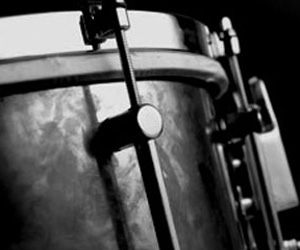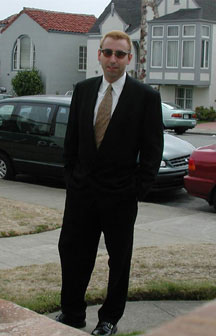A Short History of Drum Brands
Special thanks to Daniel N. Brown for making some good articles available on his drum blog. Here is a nice little history of drum brands that he put together. Check out his other article and drum tips at his drum blog
A History of Drum Brands
by Daniel N. Brown
Whether you are a beginning drummer or an old pro you may be thinking about replacing your old drum set. But, have you decided on a specific brand?
Since there are many different drum manufacturers on the market, choosing a new drum set can be a little challenging.
Here's a little background and history on some of the most popular drum brands on the market today...
from from Ludwig drum set models. But Yamaha soon acquired a place among the top drum manufacturers and led the industry with innovative shell construction and finish techniques.
In 1993 Yamaha came out with the Yamaha Enhanced Sustain System, known as YESS, for mounting drums. YESS hardware minimizes shell to mount contact, allowing maximum drum resonance. Additionally, the mounting hardware is attached to the shell at its nodal points where the shell's vibrations are of the lowest amplitude. In 1995 the RC 9000 Yamaha drums were reintroduced, enhanced with the YESS.
In addition to making acoustic drum kits and hardware, Yamaha is also a major manufacturer of best selling electronic drums. Popular Yamaha electronic drums, in order of increasing cost, are the Yamaha DTXpress, Yamaha DTXpress Special, and Yamaha DTXreme.
In the late 70s Tama was further solidified as a brand name by the introduction of the Octobans. The Octobans are sets of six inch diameter tubes with tunable drum-heads that can produce an octave range pich. Octobans were extensively used by Stewart Copeland, drummer of the Police, within his Tama Imperial Star drumset during the late 70s and early 80s.
In 1980, DW patented the chain and sprocket bass drum pedal drive system, which is the industry standard today. The first chain and sprocket model was the 5000CX, which was followed by the addition of a stabilizing footboard on the 5000T Turbo model, and an offset sprocket for quicker action on the 5000A Accelerator. During the 1980s Drum Workshop also led the industry in manufacturing of double bass pedals based on their 5000 series.
Drum Workshop followed their accomplishment in pedal making with great success in their drum manufacturing effort. Today, DW is a leading custom drum manufacturer.
Working as a vaudeville drummer in Chicago in 1908, William Ludwig became dissatisfied with the clumsy foot pedals of the day. He began designing pedals capable of fast tempos and high power, and had them made out of wood by a cabinet maker. The Ludwig & Ludwig company started out by mass producing durable metal version's of William's pedals.
Ludwig drums were selling strong throughout the 1920s, but the invention of the talking movie, which decreased demand for live percussion, and the US market crash in 1929 severely curtailed Ludwig sales. William Ludwig then sold his company in 1929 to the GC Conn Manufacturing Co. of Elkhart, Indiana, which by now also owns Leedy drums. Ludwig continued working under GC Conn until 1937, when he became dissatisfied and left to start a new drum manufacturing operation with his son, William F. Jr. They name their new company William F. Ludwig Drum Company.
In February of 1964, Ringo Starr appeared on the Ed Sullivan show playing a Ludwig drum set that he picked out at a central London location of the Drum City store. The words "The Beatles" were centered on the bass drum, with the Ludwig logo printed above. This exposure gave Ludwig instant recognition and it became the number one drum manufacturer in the world until Japanese manufacturers started making major headway in the early 70s.
In 1966 Pearl introduced the first professional drum kit under the Pearl name, the Pearl President. Until then Pearl drums were sold under their distributors’ labels. Pearl then became the first Japanese drum brand to penetrate the United States and UK.
The boom in Japanese manufacturing increased the cost of production in Japan, and in 1973, Pearl moved a great deal of its manufacturing operations to Taiwan. Today pearl drums are manufactured in the United States, Taiwan, and Japan, with a corporate headquarters in Chiba, Japan. Pearl drums are also among the most widely copied models among drum manufacturers.
Choosing a drum set is really a personal preference, and choosing one can be rather confusing. The main thing is to choose a drum set with a good reputation and one that is pleasing to your ear.
http://www.dbdrumtips.com/
A History of Drum Brands
by Daniel N. Brown
Whether you are a beginning drummer or an old pro you may be thinking about replacing your old drum set. But, have you decided on a specific brand?
Since there are many different drum manufacturers on the market, choosing a new drum set can be a little challenging.
Here's a little background and history on some of the most popular drum brands on the market today...
Yamaha
Yamaha first manufactured drums in 1968. Early Yamaha drum equipment borrowed conceptsfrom from Ludwig drum set models. But Yamaha soon acquired a place among the top drum manufacturers and led the industry with innovative shell construction and finish techniques.
In 1993 Yamaha came out with the Yamaha Enhanced Sustain System, known as YESS, for mounting drums. YESS hardware minimizes shell to mount contact, allowing maximum drum resonance. Additionally, the mounting hardware is attached to the shell at its nodal points where the shell's vibrations are of the lowest amplitude. In 1995 the RC 9000 Yamaha drums were reintroduced, enhanced with the YESS.
In addition to making acoustic drum kits and hardware, Yamaha is also a major manufacturer of best selling electronic drums. Popular Yamaha electronic drums, in order of increasing cost, are the Yamaha DTXpress, Yamaha DTXpress Special, and Yamaha DTXreme.
Tama
Tama manufacture first focused on drum hardware, whose demand was increasing due to the rise of rock music, which required sturdy equipment for loud playing. Tama led the industry with rugged double braced 36 inch tripods, and introduced the first boom cymbal stand in production. Tama also made the first multi-clamp hardware, letting drummers easily extend their drumsets.In the late 70s Tama was further solidified as a brand name by the introduction of the Octobans. The Octobans are sets of six inch diameter tubes with tunable drum-heads that can produce an octave range pich. Octobans were extensively used by Stewart Copeland, drummer of the Police, within his Tama Imperial Star drumset during the late 70s and early 80s.
DW
Drum Workshop, or DW for short, is the leading new American drum company and offers a large variety of snare drum shell materials including aluminum, copper, steel, brass, brass/maple combination, a great selection of lacquered finishes, and various types of rims.In 1980, DW patented the chain and sprocket bass drum pedal drive system, which is the industry standard today. The first chain and sprocket model was the 5000CX, which was followed by the addition of a stabilizing footboard on the 5000T Turbo model, and an offset sprocket for quicker action on the 5000A Accelerator. During the 1980s Drum Workshop also led the industry in manufacturing of double bass pedals based on their 5000 series.
Drum Workshop followed their accomplishment in pedal making with great success in their drum manufacturing effort. Today, DW is a leading custom drum manufacturer.
Ludwig
The Ludwig company was established in America by two German-born brothers, the older William F. and the younger Theobald Ludwig.Working as a vaudeville drummer in Chicago in 1908, William Ludwig became dissatisfied with the clumsy foot pedals of the day. He began designing pedals capable of fast tempos and high power, and had them made out of wood by a cabinet maker. The Ludwig & Ludwig company started out by mass producing durable metal version's of William's pedals.
Ludwig drums were selling strong throughout the 1920s, but the invention of the talking movie, which decreased demand for live percussion, and the US market crash in 1929 severely curtailed Ludwig sales. William Ludwig then sold his company in 1929 to the GC Conn Manufacturing Co. of Elkhart, Indiana, which by now also owns Leedy drums. Ludwig continued working under GC Conn until 1937, when he became dissatisfied and left to start a new drum manufacturing operation with his son, William F. Jr. They name their new company William F. Ludwig Drum Company.
In February of 1964, Ringo Starr appeared on the Ed Sullivan show playing a Ludwig drum set that he picked out at a central London location of the Drum City store. The words "The Beatles" were centered on the bass drum, with the Ludwig logo printed above. This exposure gave Ludwig instant recognition and it became the number one drum manufacturer in the world until Japanese manufacturers started making major headway in the early 70s.
Pearl
Pearl drums, manufactured by the Pearl Instrument Company, are the most widely used drum kits today. Katsumi Yanagisawa, the founder of Pearl, started his company in 1946 in Tokyo Japan. He did not start out by making Pearl drums and drum kits, but music stands.In 1966 Pearl introduced the first professional drum kit under the Pearl name, the Pearl President. Until then Pearl drums were sold under their distributors’ labels. Pearl then became the first Japanese drum brand to penetrate the United States and UK.
The boom in Japanese manufacturing increased the cost of production in Japan, and in 1973, Pearl moved a great deal of its manufacturing operations to Taiwan. Today pearl drums are manufactured in the United States, Taiwan, and Japan, with a corporate headquarters in Chiba, Japan. Pearl drums are also among the most widely copied models among drum manufacturers.
Conclusion
These are just a few of the most popular drum brands on the market. There are also many others such as Gretsch, Slingerland, Sonor, and more.Choosing a drum set is really a personal preference, and choosing one can be rather confusing. The main thing is to choose a drum set with a good reputation and one that is pleasing to your ear.
Daniel N. Brown has been drumming since 1976!
Get his F-R-E-E Special Report, "Drum-tudes: 10 Attitudes That Will Make You a Star on the Drum Set" when you subscribe to his F-R-E-E Weekly E-letter...http://www.dbdrumtips.com/

